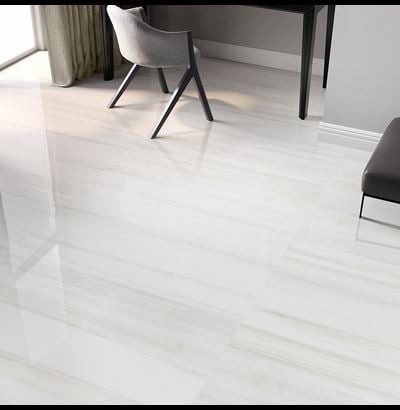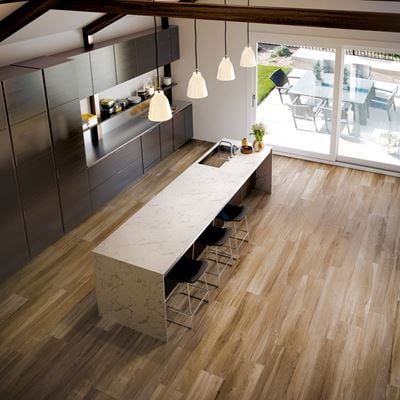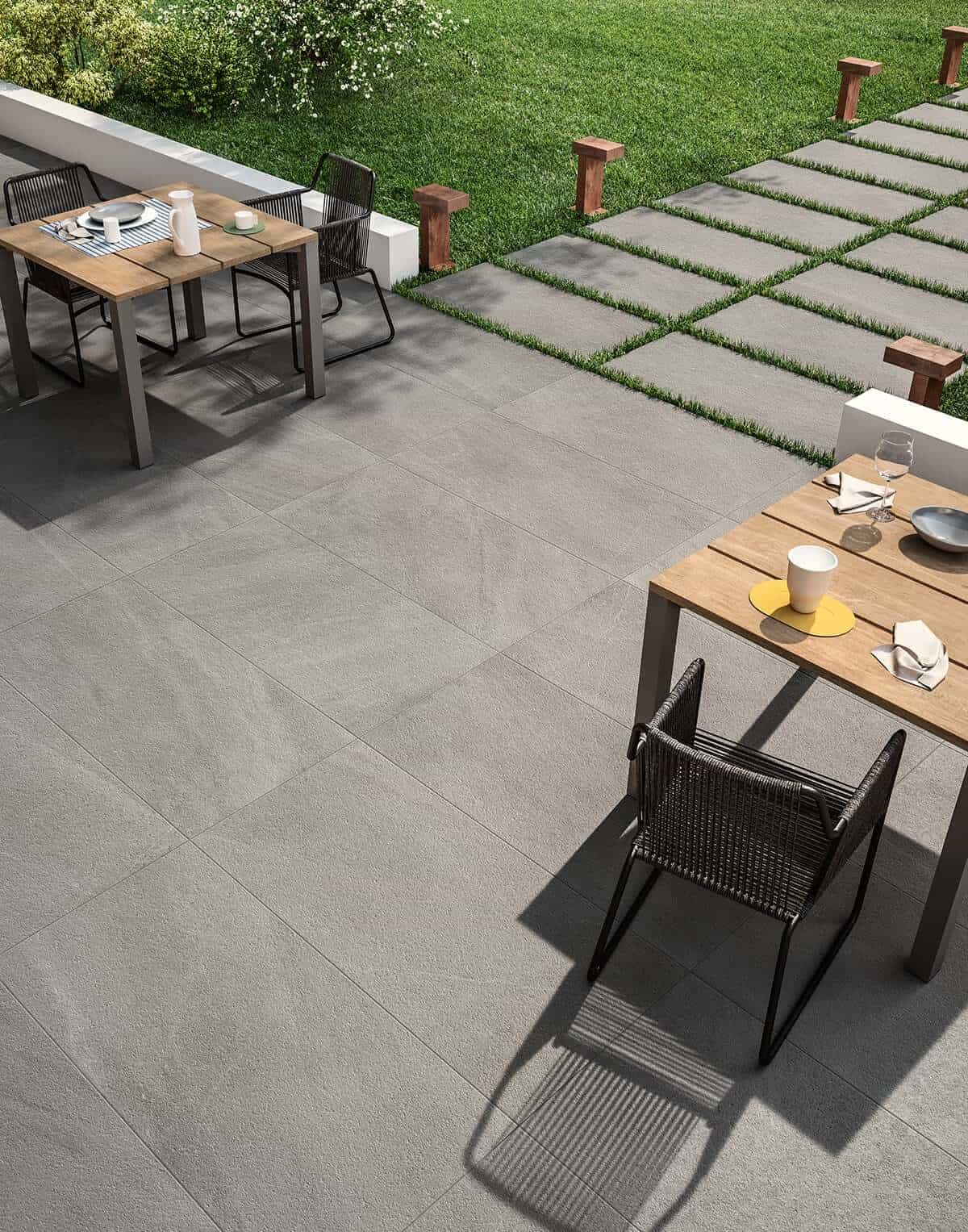
Extra-large tiles are a beautiful, dramatic and unique choice for flooring, and in addition to their aesthetic appeal they offer several benefits. They deliver an undeniable, eye-catching impact and can help make your room appear more spacious. The larger tile surface also allows for fewer grout joints, which can contribute to a cleaner and more modern look. Large format porcelain tile is available in so many versatile designs, colors and patterns that it has become a top trend in interior design.
If you’re planning to have large porcelain tile installed in your home or you want to know more about it, let’s look at the basics of installing large format tile.

What is Large Format Tile?
The term “large format” generally refers to tiles that have at least one side longer than 15”. These large size porcelain tiles are able to remain quite thin, thanks to innovations in modern tile technology.
Just a few porcelain tiles that are available in large scale sizes include: Pietra Italia, Stage, Aspen, and Vega.

Installation Considerations for Large Format Tile
Subfloor Preparation: One of the most important considerations for installing large format tile floor is subfloor preparation and levelling. When working with tiles that are quite large, the tolerance for variations in the level of a room’s subfloor is very low. This means that in order to ensure a proper, level, safe installation of large format tile, the subfloor must be as flat as possible.
Your tile installer will likely use a self-leveling underlayment to ensure adequate flatness and to avoid lippage (a term that describes a tile being higher than the one beside it). While a slight lippage can be acceptable for wall installations, lippage on flooring can be much more noticeable and even pose a tripping hazard.
Special lippage systems used while the mortar sets can help ensure the tile is installed on an even level. However, there’s no substitute for a properly prepped and level substrate. On top of that, the subfloor needs to be clean and dry. It should be completely free of debris, dust, old adhesive, contaminants and moisture. Inadequate prepping of a subfloor can cause issues with the installation or durability of a tile floor in the long-term.

Adhesive: Professionals will be able to determine the correct mortar and trowel for your specific tile as well. Trowels are made in a variety of sizes and with different kinds of notching, and you’ll need an adhesive designed to hold the extra weight and size of large tile installations.

Installation Tip: When installing large format tile, we recommend always using the back-buttering method. Applying the adhesive on the entire back of the tile in addition to the substrate will ensure a full and secure coverage, which is especially essential for extra-large tiles.





